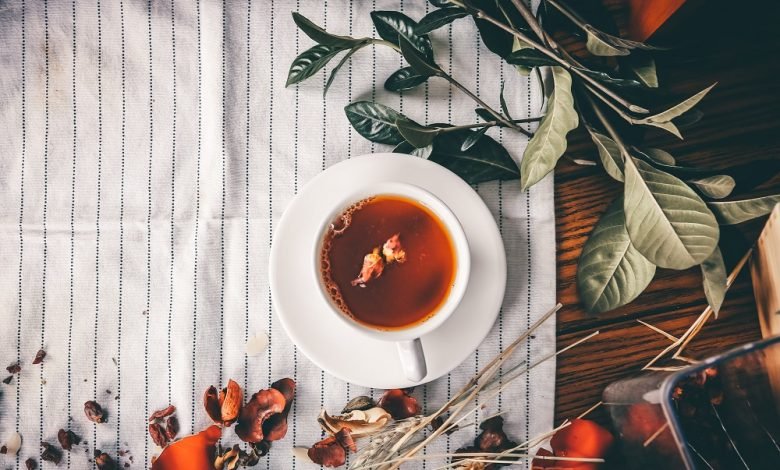The Health Benefits of Herbal Teas and Traditional Teas

Tea has a wide range of health benefits. In cultures around the world, generations of people drink tea to boost their wellness and socialize. The health benefits of different types of tea vary, from burdock root to rooibos.
You should understand the differences between herbal tea, black tea, green tea, and other types of flavored tea if you’re looking for a specific advantage. The health benefits of various teas are supported by scientific evidence.
Traditional Tea Benefits
The traditional tea plant is called Camellia sinensis. Traditionally, tea is categorized into four types: green, black, oolong, and white.
Every tea is distinguished by its degree of oxidation or fermentation. The leaves of heavily oxidized teas are usually darker or redder, while less fermented teas tend to be lighter or greener. Most traditional teas contain caffeine.
Green Tea and Matcha
Among the most popular teas on the market, green tea is known for its antioxidant properties and for boosting health. Health food stores and wellness communities are also very popular with matcha or powdered green tea. Green tea leaves are also used to make gunpowder tea.
Some studies have shown mixed results regarding tea’s anti-cancer properties. In addition, green tea may reduce cholesterol levels and the risk of heart disease. There are also studies showing that drinking green tea can reduce your risk of developing high blood pressure.
Clinical trials have not been conducted to test whether green tea prevents tooth decay. Green tea contains caffeine, which may enhance mental alertness and boost metabolism in a limited way.
Black Tea
Black tea is the most popular type of tea in the world. In addition to Earl Grey and Darjeeling black teas, you can also find masala chai black tea (when combined with other spices), English breakfast tea, and black teas scented with aromas such as rose tea and lychee tea.
As well as smoky blends such as Lapsang Souchong and Keemun black teas, Yunnan black tea is also popular. Approximately 50-90 milligrams of caffeine are present in black tea.
In addition to the catechins, flavonoids, and tannins found in green tea, black tea also contains polyphenols. The compounds in polyphenols may have health benefits.
Antioxidants are abundant in black tea. When consuming black tea, use loose leaves (rather than tea bags) and avoid milk and sugar.
Oolong Tea
You might prefer oolong tea if you prefer a more complex tea than black tea. The caffeine content of tea varies depending on the amount of brew time and the amount of caffeine in the cup (less than coffee).
As with green tea, oolong tea has a reputation for helping to lose weight. According to some scientific evidence, consuming oolong tea may be beneficial for reducing body fat in overweight or obese individuals. Animal studies have shown that the tea can lower triglyceride levels as well as cholesterol levels.
Many people tout the fat-burning effects of oolong tea. Remember, however, that simply drinking oolong tea does not change your overall health profile in any dramatic or noticeable way.
Pu-erh Tea
Thousands of years ago, pu-erh tea became popular in China. It is becoming equally popular elsewhere in the world. Before it is ready for consumption, Pu-erh tea must be fermented, pressed into shapes, and aged under high humidity. There is a distinct pungent scent associated with Pu-erh teas.
There is a claim that this tea can be both detoxifying and weight loss friendly. Moreover, some people claim it can lower cholesterol and boost mental clarity.
Pu-erh tea may help people lose weight and lower their cholesterol, according to some research.
White Tea
White tea is a Chinese tradition that dates back more than a thousand years. In contrast to other tea types, white tea is not heated or oxidized, so it remains relatively unprocessed.
While many studies have been conducted on green teas and black teas, little research has been conducted on white tea. There is research, however, that suggests that white tea extract may help break down fat cells.
Herbal Tea Benefits
Fruit teas and herbal teas differ from traditional teas. They contain less caffeine. Herbs and fruits are dried to produce them, as their name implies. There may be a variety of health benefits that come with herbs, but the jury is still out on which of them you are likely to gain when you drink herbal tea.
Chamomile Tea
Chamomile (or manzanilla) is an herbal tea. The tea does not contain caffeine, so it does not stimulate the same way as black tea or green tea. As a result, chamomile tea is widely regarded as a soothing beverage.
Tea made from chamomile flowers can be used topically for treating skin ulcers and even hemorrhoids. However, no clinical trials on humans have been conducted to confirm its effectiveness. Traditionally, chamomile tea has been used to aid in sleep and reduce anxiety.
Rooibos and Honeybush Tea
Honeybush and Rooibos tea are tea “cousins” since they come from similar regions in South Africa. These herbal teas are caffeine-free. Rooibos has a fruity flavor. The taste of honeybush is often compared to that of honey.
A very limited amount of research suggests that honeybush consumption can improve bone health. However, the findings are preliminary. Honeybush has a sweet taste, so it is reasonable to assume that you will consume fewer calories if you drink it rather than eat dessert (or drink tea sweetened with sugar).
Turmeric Tea
While turmeric tea is gaining popularity among health and nutrition circles, it is not really tea as we know it. Neither tea leaves nor herbs are used to make it. It is a mixture of spices combining health benefits and flavor.
Lemon, honey, and turmeric are usually used in turmeric tea recipes. In addition to ginger, black pepper (for absorption), cinnamon, and nutmeg, other spices are sometimes used in recipes. Turmeric tea may also be flavored with black tea.
Hibiscus Tea
Ancient Egyptian and Chinese cultures both used hibiscus tea for its potential medicinal properties. An aromatic tea is made from hibiscus flowers, the tea has a slightly tart or sour taste. Studies have shown that hibiscus tea can reduce high blood pressure and improve cardiovascular health.
Peppermint Tea
Ancient Greek, Egyptian, and Roman diets included peppermint tea as a therapeutic tool. Peppermint leaves are steeped in hot water to create the fragrant tea, which has traditionally been used to ease colds, flus, and stomach discomforts.
Flavored Teas
A variety of companies create flavored teas by blending traditional teas with fruit flavors or spices. You may prefer one of these infused teas instead of plain black or green tea if you don’t like the taste of plain black or green tea.
Tea’s health benefits are not usually affected by flavor infusions. If you drink tea with sugar or cream added on your own, then your health will be worse than when you choose plain fruit-flavored tea (like soursop tea).
However, commercially sweetened teas, such as flavored iced teas or sweetened tea drinks, may provide unnecessary calories and sugar.
The Bottom Line
Drinking tea is a calming and relaxing activity for many people. Even if the tea itself does not provide any health benefits, spending some time brewing a cup and enjoying each sip can provide a sense of peace and wellness.
Many types of tea have a long history of use for health, so it is very likely that your warm cup also offers medicinal benefits. Due to the lack of hard evidence supporting many of the claims, it isn’t safe to rely on tea to treat, prevent, or manage illness.
Working with your healthcare provider to develop a plan that includes both traditional and holistic methods can help you manage your medical condition. If you limit the sugar added to your tea, it can be a healthy part of your diet.






